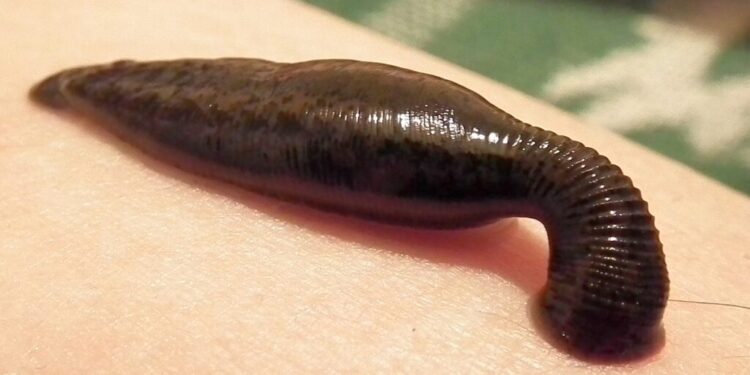In the heart of Mumbai, where advanced hospitals and high-tech medical treatments are commonplace, a quietly powerful and ancient healing method is gaining attention once again—medicinal leech therapy, also known as Hirudotherapy or Alaq therapy. Though it may sound unusual to some, this practice has a deep-rooted history in traditional medicine and is now being rediscovered for its surprising effectiveness in treating modern illnesses.
With the rise in chronic conditions, inflammatory diseases, and antibiotic resistance, many Mumbaikars are exploring natural, holistic solutions. Medicinal leech therapy Mumbai offers exactly that: a blend of time-tested healing, scientific support, and minimal side effects. It’s more than just a curious tradition—it’s a therapeutic gift from nature.
A Glimpse into the Past: The Legacy of Medicinal Leeches
The therapeutic use of leeches dates back to over 2,500 years ago. Historical texts credit the ancient Greek physician Hippocrates, known as the father of medicine, as one of the earliest advocates of leech therapy. In the Unani system of medicine, which flourished in the Arab world and India, leech therapy has been long utilized to treat imbalances in the body’s humors (Akhlat).
Despite advancements in modern medicine, the principle of leech therapy has remained unchanged: to draw out stagnant, impure, or infected blood from specific points in the body, allowing better circulation and faster healing.
How Medicinal Leech Therapy Works
Medicinal leeches used in therapy, most commonly Hirudo medicinalis, are not ordinary parasites. They are bioengineered by nature with specialized mouthparts and saliva that contain a cocktail of therapeutic substances.
Key components found in leech saliva include:
- Hirudin – a natural anticoagulant that prevents blood clotting
- Bdellins – anti-inflammatory agents
- Eglins – pain-relieving and anti-inflammatory peptides
- Anesthetic enzymes – making the bite nearly painless
- Vasodilators – which improve blood flow and circulation
These substances allow leeches to attach painlessly, suck blood efficiently, and stimulate healing in the affected area. Once they’ve consumed enough blood, the leech naturally detaches and is disposed of or ethically handled according to hygiene protocols.
Conditions Treated with Leech Therapy in Mumbai
Leech therapy is not just a relic of history—it is proving its worth in a wide range of modern health issues, especially in Mumbai, where environmental pollution, stress, and sedentary lifestyles contribute to chronic ailments.
Common conditions treated include:
- Non-healing wounds and ulcers
- Varicose veins and venous congestion
- Arthritis and joint pain
- Skin disorders such as eczema and psoriasis
- Post-surgical recovery (especially in plastic and reconstructive surgeries)
- Migraine and chronic headaches
- Blood circulation problems and swelling
Many patients who have tried conventional methods without success report significant relief and improved healing after undergoing Hirudotherapy.
Why Mumbaikars Are Turning to Leech Therapy
In Mumbai’s fast-paced urban environment, people are increasingly seeking holistic and side-effect-free alternatives to traditional allopathy. Leech therapy, being minimally invasive and affordable, appeals to both the health-conscious and those suffering from long-standing conditions.
Benefits include:
- Minimal side effects
- Quick recovery in many cases
- No pharmaceutical drugs required
- Cost-effective treatment option
- Complementary to other treatments (e.g., Unani, Ayurveda, modern medicine)
Furthermore, awareness of natural healing and traditional medicine is growing among young professionals, senior citizens, and fitness-conscious individuals in Mumbai alike.
The Therapy Experience: What to Expect
A typical leech therapy session in Mumbai begins with a consultation, during which the therapist assesses the patient’s condition and identifies the suitable area for treatment.
Here’s what usually happens:
- Preparation: The skin is cleaned and sterilized. Leeches are selected from a sterile environment.
- Application: The leech is placed gently on the affected area. Within seconds, it attaches and begins to feed.
- Duration: A session usually lasts 20 to 45 minutes, depending on the condition.
- Detachment: After feeding, the leech detaches naturally. The site may continue to bleed for a short while—a sign that impurities are being expelled.
- Aftercare: The wound is cleaned, dressed, and monitored. Most patients can return to their regular activities the same day.
Though the sight of a leech may feel intimidating at first, the procedure itself is painless and safe when conducted by trained practitioners.
Safety and Hygiene in Modern Practice
Modern-day leech therapy in Mumbai is conducted under strict hygienic and ethical standards. Clinics use sterile equipment, store leeches in clean medical conditions, and follow disposable protocols to avoid cross-contamination. Each leech is typically used only once per patient.
Before therapy, practitioners screen patients for contraindications such as blood disorders or active infections to ensure safety.
Final Thoughts: Nature’s Healer in the City of Dreams
Medicinal leech therapy is a testament to the enduring wisdom of nature. While the idea of using leeches may seem old-fashioned or even unsettling to some, the science and results speak volumes. In a city like Mumbai, where health challenges are evolving and many are looking for alternatives beyond pills and surgeries, leech therapy provides a natural, effective, and time-tested solution.
As public interest in holistic wellness grows, therapies like Hirudotherapy remind us that sometimes, the oldest remedies are the most powerful. With the right guidance and care, leech therapy may very well be the next frontier in Mumbai’s integrative health journey.













